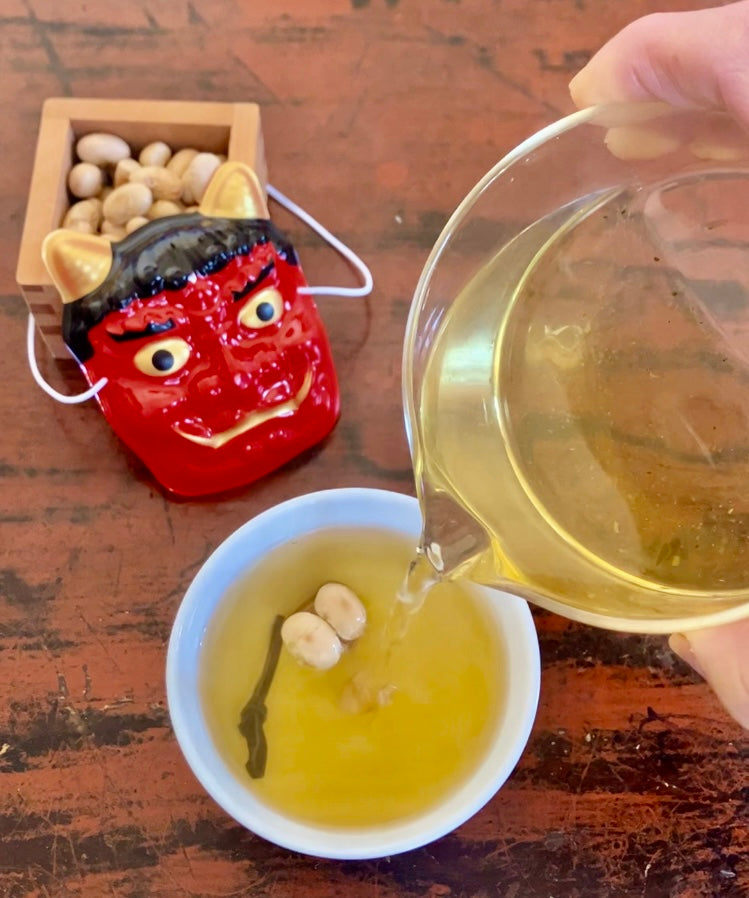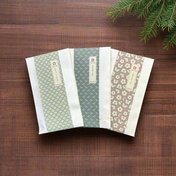Setsubun (節分) is a traditional Japanese festival that is held on February 2, 3 or 4, one day before the start of spring, according to the Japanese lunar calendar. The word Setsubun literally signifies the division of two seasons (winter and spring), and according to the lunar calendar, Setsubun refers to the closing of the winter season and the arrival of spring, specifically referred to as Risshun (立春). Setsubun’s calendar date depends on Risshun, which similarly depends on the lunar calendar and occurs between February 2nd to 4th. Interestingly, Setsubun has been on February 3rd in the last 30 years but in 2021, it was on February 2nd. This year (2024), Setsubun will be on February 3rd.
Setsubun is said to have its roots in ancient China. Historical records indicate the festival was introduced to Japan during the Heian period (794-1185). While it is not a National holiday per se, for many centuries, the Japanese people have been performing rituals with the purpose of chasing away evil spirits at the start of spring. For instance, during the 13th century, it is said that it became a custom to drive away evil spirits by the strong smell of burning dried sardine heads, the smoke of burning wood and the noise of drums. While these customs are no longer practiced nowadays, a few people still decorate their house entrances with fish heads and holly tree leaves in order to deter evil spirits from entering their homes. In fact, at the grocery store the other day, I came across “Hiragi”, which is holly osmanthus/holly olive, a species of flowering plant in the olive family. To be precise, it was not just holly osmanthus, basically, a Setsubun bundle with an explanation on it that the spines of the holly osmanthus, the sound of empty bean shells and the smell of sardines drove away evil spirits. It even came with an oni (devil) mask!
 Some of the Setsubun-related products that one comes across in the grocery stores leading up to Setsubun in Japan. Left: “Hiragi”, included in the Setsubun bundle. Right: Soybeans for Setsubun bean throwing.
Some of the Setsubun-related products that one comes across in the grocery stores leading up to Setsubun in Japan. Left: “Hiragi”, included in the Setsubun bundle. Right: Soybeans for Setsubun bean throwing.
It was during the Muromachi period(1336-1573) when beans started to be thrown to drive away demons that represent the evil spirits bringing misfortune. Bean throwing remains one of the biggest highlights of Setsubun today and I even have fond memories of it from my childhood. You may wonder, “Why beans???”. Beans were a staple food that was essential for survival. And along with rice, beans were believed to have sacred power, which could ward off evil spirits. Notably, the Japanese word for beans is mame (豆) and sounds similar to the word for demon eyes (mame, 魔目). In addition, throwing beans has a similar connotation to destroying demons (mametsu, 魔滅)!
Highlights of the Setsubun Festival
Mamemaki (豆まき): The throwing of roasted soybeans around one’s home, is perhaps the most general custom that is exclusively carried out on the day of Setsubun. When throwing beans, we chant, “Oni wa Soto, Fuku wa Uchi!” (鬼は外、福は内!) as we scatter beans around the house or throw them at the demons. The phrase translates to, “Demons out, fortune in!” For bean throwing, it is best to start off with the room that is located the farthest from the entrance. It is also said to keep the windows open as you throw the beans so that evil spirits are easily able to leave. Another fun custom, especially for families with young children, is to throw beans at a family member who is disguised as a demon. This sounds amusing, but I sure wouldn't want to be the demon. Many people will then eat the same number of roasted beans as their age, because this is said to bring good fortune. As a child, I faintly recall wishing I could eat more beans than my age (as I thought the beans were good!). If you happen to be visiting Japan during Setsubun, keep in mind that a number of shrines and temples will hold bean throwing ceremonies, where the priest and/or performers may throw beans, money, and other prizes into the crowd. It can be a neat event to witness especially if you are aware of the occasion it marks.
Ehomaki (恵方巻): “Ehomaki” is a unique type of sushi roll that is generally eaten exclusively on the day of Setsubun. You can think of it as a fortune sushi roll. “Eho” refers to the direction where Toshitokujin (歳徳神), the god who controls good fortune for the year, is located. The ehomaki is relatively long with many ingredients (large) compared to the typical sushi roll that one will encounter at restaurants. In general, it is considered good to use seven ingredients including cucumber and egg for ehomaki as the number seven is associated with good fortune (see below for typical ingredients and their significance). It also comes from the fact that we have 7 famous gods of fortune called Shichifukujin (七福神) in Japan.

 Above are the Shichifukujin, the seven famous gods of good fortune in our neighborhood. If you look closely, you can see some of the characteristics of the dieties. They each represent different virtues and meaning.
Above are the Shichifukujin, the seven famous gods of good fortune in our neighborhood. If you look closely, you can see some of the characteristics of the dieties. They each represent different virtues and meaning.
Perhaps another important detail to note is that when you go to eat your ehomaki, you need to face the direction that is believed to bring you good fortune during the year. Make sure to check the direction beforehand as it changes every year! This year the lucky direction is East-Northeast. Further, although the ehomaki is rather big, it is thought that it is better to eat it whole (i.e., without cutting it with a knife), so as not to cut your ties or lose your fortune. While I prefer to actually enjoy eating the ehomaki slowly and midfully, some people will challenge themselves to eat the entire roll at one time without stopping. This may be because it is important to make a wish while eating it. Since the fortune will disappear if you talk or lose focus, it is said that you should not talk while you are eating your roll. Other people say close your eyes while eating it, or laugh while you eat it. There appears to be variations depending on the region but it is clear that there are particular ways that one should consume this roll! One does not have to look too far to find one of these fortune rolls. These days, typical convenience stores such as 7-Eleven, Family Mart and Lawson, as well as major sushi restaurants (chain restaurants) and supermarkets make efforts to have ehomaki available every year. Some are even developing ehomaki and eho rolls for sweets.

Photo of ehomaki from last year’s Setsubun (2023). I will admit we may have forgotten to face the lucky direction, we were simply facing the Kamo River in Kyoto. For the upcoming Setsubun in the year 2024, the lucky direction is said to be east-Northeast (東北東), specifically east-northeast-way-east (東北東微東).
Key Ingredients of a Ehomaki
- Kanpyo (dried shavings of gourd): Because it is thin and long, it is used to pray for longevity and matchmaking.
- Boiled Shiitake: The shape of the umbrella of the shitake resembles a “jinkasa” (陣笠), so it symbolizes protecting oneself
- Egg (Japanese: Tamagoyaki/Datemaki): The golden color represents “increasing financial fortune”, and datemaki resembles a scroll, so it is linked to “improving knowledge”
- Eel: eels swimming upstream - “Promotion, Ascension”
- Cucumber: In Japanese, cucumber is called “Kyuri” which has a connotation for “Kyu no ri wo eru「九の利を得る」 - to gain nine benefits”
- Shrimp: Represents living long enough to bend one’s back (hopefully, your back will not be bent though!)
- Sakura denbu: Made with white fish such as sea bream. The sakura/cherry blossom color symbolizes spring and is said to be auspicious.
Good Fortune Tea
Fukucha (福茶): Last but certainly not least, there is also a custom of drinking a lucky tea called Fukucha. The defining aspects of fukucha is that it must include seaweed, pickled plum (ume), and three beans that were used for bean throwing. There are some regions where people also drink fukucha (I have previously referred to it as obukucha, because this is specifically for welcoming a new year) on New Year's Day, but in terms of the pre-western traditional calendar, it is a tea that is to be enjoyed on Setsubun. Please enjoy it while praying for good health throughout the year!

Fukucha ingredients
- 1~2 pieces of salted kelp/seaweed (or kelp tsukudani). The photo above shows musubi kombu (tied kelp), which may be suitable type of kelp to use for a fukucha because by tying the knot, it has the meaning of uniting joy and strengthening family ties.
- 1 pickled plum (ume)
- Beans (beans used for bean-throwing) 3 grains. Roasting the beans can give a nice touch to the tea. Some people are very particular about 3 beans. No more, no less. Keep in mind that you can eat the beans with the tea!
- Hot water or tea - appropriate amount. Note that for tea, it does not have to be green tea. A genmaicha, hojicha, a bancha of your choice will make a good solid base.
Koji-inspired Fukucha
Koji (aspergillus oryzae) is a special type of mold cultured rice that is the basis of soy sauce, miso and sake. After pouring freshly boiled water or freshly brewed tea into the fukucha (i.e., with the above ingredients) and allowing it to cool down a little, we recommend adding a pinch of koji and drinking it slowly. It is best to use fresh koji, but dried koji is also OK.
 To read more about koji, please refer to Sachiko-san’s article. Photo by Sachiko Murata.
To read more about koji, please refer to Sachiko-san’s article. Photo by Sachiko Murata.
Experiment with rare Japanese banchas as the base of your Fukucha
Recently, I have been enjoying different regional banchas such as the wondrous smoky Kyobancha and the slightly fermented Awabancha from Tokushima Prefecture, to name a few. Remember that the base of your good fortune tea does not have to be a typical sencha. Have fun experimenting with what may go well with the saltiness of the seaweed, plum, and sprinkle of bean flavor.
If you are in Japan this February, for Setsubun this winter, be sure to enjoy fukucha along with bean-throwing and the good fortune ehomaki. We hope our friends abroad may also try making their own (improvised) fukucha. Cheers to good health and fortune!
Featured image: Making good fortune tea, fukucha for Setsubun. The base tea in the photo is Michiko-san's hand-picked sun dried awabancha from Kamikatsu in Tokushima Prefecture.
Have additional insights? Please don't hesitate to post comments and/or questions below. Or directly contact me (Moé Kishida): moe@yunomi.life. Thank you!


